Cutting boards are essential tools in any kitchen, but improper maintenance can lead to serious health hazards. One common concern is mold growth on cutting boards. Is mold on a cutting board dangerous? The short answer is yes. Mold can produce harmful toxins that contaminate food and pose significant health risks. Ensuring the cleanliness of your cutting board is crucial for food safety. This article will explore the causes of mold growth on cutting boards, safe removal techniques, prevention methods, and the best cutting board materials to minimize mold issues.
Why Cutting Board Cleanliness is Crucial for Food Safety

Cutting boards come into direct contact with food, making their cleanliness vital in preventing cross-contamination and foodborne illnesses. When mold grows on a cutting board, it can spread toxins that lead to allergic reactions, respiratory issues, and infections. Using a contaminated board for food preparation increases the risk of ingesting mold spores, which may cause digestive problems.
The cleanliness of your cutting board directly impacts your health. Is mold on a cutting board dangerous? Absolutely. Keeping it mold-free is an essential step in maintaining kitchen hygiene and food safety. A moldy cutting board can transfer dangerous microorganisms to food, leading to illnesses such as salmonella, listeria, and E. coli.
Ensuring proper cleaning and drying after each use will significantly reduce these risks. Additionally, understanding the best materials for cutting boards can further help in maintaining a sanitary cooking environment. Is mold on a cutting board dangerous? If left unchecked, it can result in severe food poisoning and long-term health issues.
See more: How To Clean A Cutting Board Properly
Common Causes of Mold Growth on Cutting Boards
Understanding why mold develops on cutting boards can help in preventing its occurrence. Here are the primary factors that contribute to mold growth:
Moisture Retention
Mold thrives in damp environments. If a cutting board is not dried properly after washing, moisture can encourage mold spores to grow. Wooden and bamboo cutting boards are especially susceptible since they absorb moisture more easily than plastic or metal ones.
Food Residue
Tiny food particles left on the surface provide nutrients for mold to multiply. If a board is not scrubbed thoroughly, even invisible remnants of food can support mold growth. Is mold on a cutting board dangerous? Yes, because it feeds off these residues and spreads rapidly.
Poor Ventilation
Storing a damp cutting board in a dark, enclosed space, such as a cabinet or drawer, can accelerate mold formation. Keeping cutting boards in a dry, well-ventilated area is crucial to preventing mold.
Cross-Contamination

Using the same board for raw meats, vegetables, and cooked foods without proper cleaning can introduce mold and bacteria. It is essential to have separate cutting boards for raw proteins and produce to reduce contamination. Is mold on a cutting board dangerous? Cross-contamination can make it even more hazardous, spreading bacteria alongside mold spores.
Inferior Material
Some cutting boards absorb water more easily than others, making them more susceptible to mold. Choosing a mold-resistant material, such as plastic or titanium, can significantly reduce the risk of mold development.
Is Mold on a Cutting Board Dangerous?

The health risks associated with mold-contaminated cutting boards should not be taken lightly. Here are some potential dangers:
- Mycotoxins: Some molds release toxins that can cause food poisoning and digestive problems. Mycotoxins are hazardous compounds that can have long-term health effects, including liver and kidney damage.
- Respiratory Issues: Inhaling mold spores may trigger asthma and allergic reactions. People with respiratory conditions, such as asthma or chronic bronchitis, may experience worsened symptoms when exposed to moldy surfaces.
- Infections: Using a moldy board for food preparation can lead to bacterial infections, especially in individuals with weakened immune systems. Contaminated food may cause symptoms such as nausea, vomiting, and diarrhea. Is mold on a cutting board dangerous? Yes, especially for individuals with compromised immune systems.
- Bad Odor and Taste: Mold imparts an unpleasant smell and taste to food, affecting its quality. The musty or sour odor from moldy cutting boards can transfer to food, making it unappetizing and unsafe to eat.
If you’ve noticed mold on your cutting board, it’s crucial to act quickly. Is mold on a cutting board dangerous? Yes, and immediate cleaning or replacement is necessary to avoid health hazards. Ignoring mold can allow spores to spread to other kitchen surfaces and utensils, increasing the likelihood of contamination.
How to Safely Remove Mold from a Cutting Board

If mold has formed on your cutting board, follow these steps to safely remove it:
Scrub with Baking Soda and Vinegar
Sprinkle baking soda over the board and scrub with a brush soaked in white vinegar. This natural method effectively removes mold while eliminating odors.
Use Hydrogen Peroxide
Apply 3% hydrogen peroxide to kill mold spores, let it sit for 10 minutes, then rinse thoroughly. Hydrogen peroxide acts as a strong disinfectant without harmful chemicals.
Lemon and Salt Method
Cut a lemon in half, sprinkle salt over the board, and scrub with the lemon to disinfect naturally. The acidity of lemon juice helps break down mold and neutralize bacteria.
Bleach Solution
Mix one tablespoon of bleach with a gallon of water, soak the board for a few minutes, then rinse well. This is a strong but effective method, particularly for stubborn mold stains. Is mold on a cutting board dangerous? If not properly removed, it can continue spreading despite cleaning.
Dry Properly
After cleaning, allow the board to air dry completely to prevent moisture buildup. Placing the board in direct sunlight for a few hours can also help kill any remaining mold spores.
How to Prevent Mold on a Cutting Board

Prevention is always better than cure. Here are some tips to keep mold from growing on your cutting board:
- Wash Immediately After Use – Clean the board with hot soapy water after every use. Is mold on a cutting board dangerous? Yes, and regular washing is the best way to keep it from forming.
- Dry Thoroughly – Store your cutting board in a dry, well-ventilated area. Avoid leaving it in humid places where moisture can accumulate.
- Use Food-Safe Mineral Oil – Applying oil on wooden boards creates a moisture barrier, reducing the likelihood of mold absorption.
- Avoid Soaking – Prolonged water exposure can encourage mold growth. Rinse and dry quickly rather than leaving the board submerged.
- Rotate Boards – Using multiple boards and allowing them to dry fully between uses can prevent mold buildup. Keeping an extra board on hand allows you to switch them out when needed.
When to Replace a Moldy Cutting Board
Despite cleaning efforts, some cutting boards become irreversibly moldy. Here are signs it’s time to replace yours:
- Persistent Mold Growth – If mold keeps coming back despite cleaning. Is mold on a cutting board dangerous? If it persists, the board should be replaced.
- Deep Cracks or Grooves – These can harbor bacteria and mold, making thorough cleaning impossible.
- Foul Odor – A lingering musty smell indicates mold penetration.
- Discoloration and Stains – Mold stains that won’t come off suggest contamination beyond surface level.
If your cutting board shows any of these signs, replacing it is the best option to ensure food safety. Is mold on a cutting board dangerous? Absolutely, and when a board is beyond cleaning, it’s best to discard it.
If you want to avoid mold growth altogether, consider using a cutting board made from stainless steel or titanium. ChopChop USA Stainless Steel Cutting Board and ChopChop USA Titanium Cutting Board is a great option because it is non-porous, resistant to moisture buildup, and easy to clean. Unlike wood or plastic, these materials do not absorb water, reducing the risk of mold formation and bacterial contamination. Investing in a high-quality mold-resistant cutting board can help ensure a safer and more hygienic food preparation experience.
Conlusion
Mold on a cutting board is not just an aesthetic issue—it is a serious health hazard. Ensuring proper cleaning, drying, and storage will help prevent mold growth and keep your kitchen safe. Is mold on a cutting board dangerous? Yes, but by following the steps outlined in this guide, you can maintain a mold-free cutting board and protect yourself and your family from potential health risks.
If you have any questions about ChopChop USA's products or promotions, please feel free to contact us at support@chopchopusa.com. Our dedicated team is available 24/7 and always happy to assist you.




